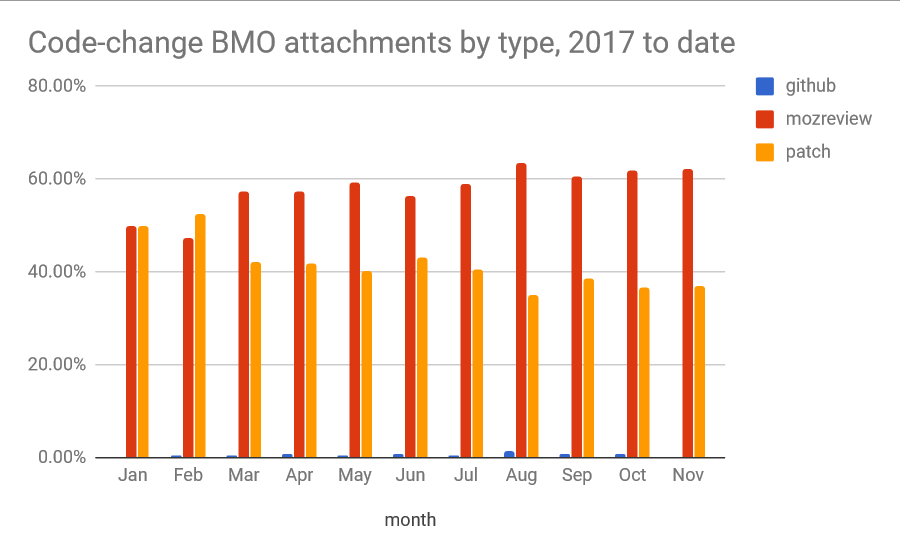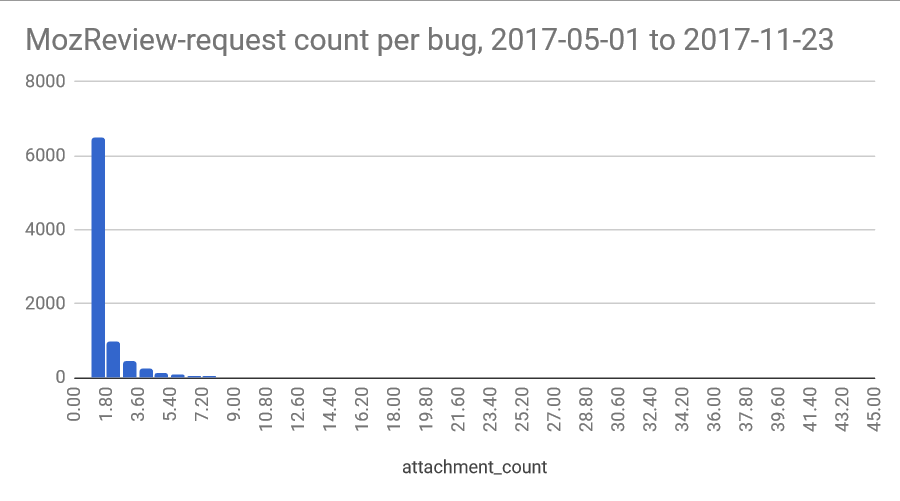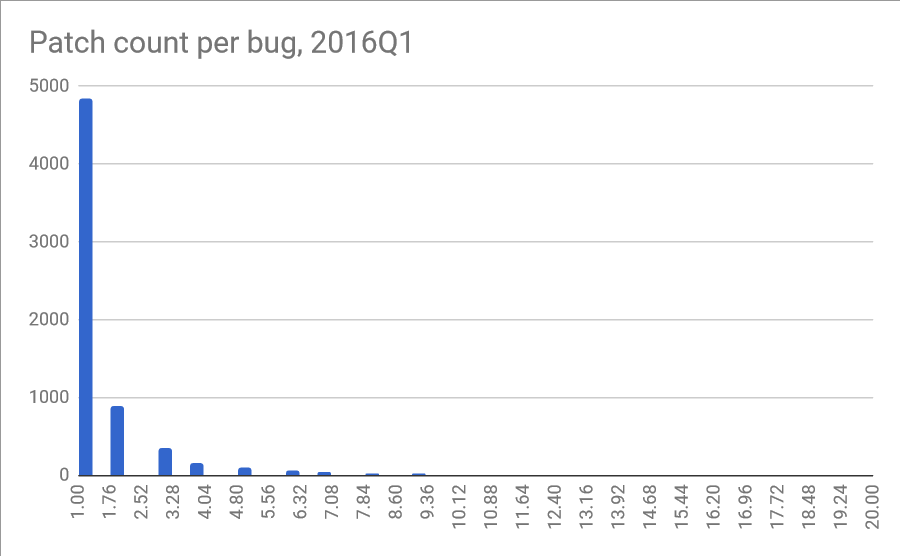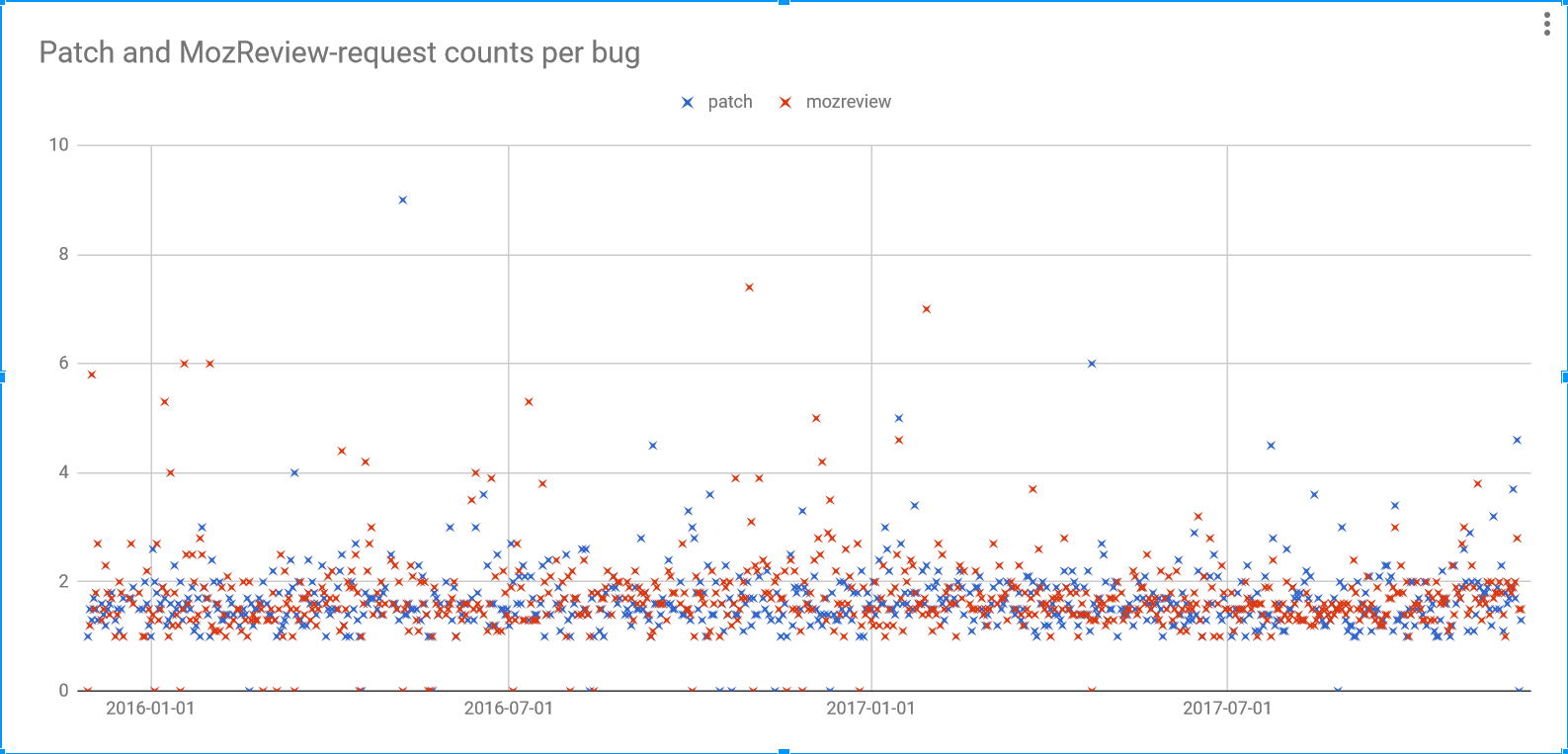There is a strong argument in modern software engineering that a sequence of smaller changes is preferable to a single large change. This approach facilitates development (easier to debug, quicker to land), testing (less functionality to verify at once), reviews (less code to keep in the reviewer’s head), and archaeology (annotations are easier to follow). Recommended limits are in the realm of 300-400 changed lines of code per patch (see, for example, the great article “How to Do Code Reviews Like a Human (Part Two)”).
400 lines can still be a fairly complex change. Microcommits is the small-patch approach taken to its logical conclusion. The idea is to make changes as small as possible but no smaller, resulting in a series of atomic commits that incrementally implement a fix or new feature. It’s not uncommon for such a series to contain ten or more commits, many changing only 20 or 30 lines. It requires some discipline to keep commits small and cohesive, but it is a skill that improves over time and, in fact, changes how you think about building software.
Former Mozillian Lucas Rocha has a great summary of some of the benefits. Various other Mozillians have espoused their personal beliefs that Firefox engineering would do well to more widely adopt the microcommits approach. I don’t recall ever seeing an organized push towards this philosophy, however; indeed, for better or for worse Mozilla tends to shy away from this type of pronouncement. This left me with a question: have many individual engineers started working with microcommits? If we do not have a de juror decision to work this way, do have a de facto decision?
We designed MozReview to be repository-based to encourage the microcommit philosophy. Pushing up a series of commits automatically creates one review request per commit, and they are all tied together (albeit through the “parent review request” hack which has understandably caused some amount of confusion). Updating a series, including adding and removing commits, just works. Although we never got around to implementing support for confidential patches (a difficult problem given that VCSs aren’t designed to have a mix of permissions in the same repo), we were pretty proud of the fact that MozReview was unique in its first-class support for publishing and reviewing microcommit series.
While MozReview was never designated the Firefox review tool, through organic growth it is now used to review (and generally land) around 63% of total commits to mozilla-central, looking at stats for bugs in the Core, Firefox, and Toolkit products:

To be honest, I was a little surprised at the numbers. Not only had MozReview grown in popularity over the last year, but much of its growth occurred right around the time its pending retirement was announced. In fact, it continued to grow slightly over the rest of the year.
However, we figured that, owing to MozReview’s support for microcommits, this wasn’t quite a fair comparison. Bugzilla’s attachment system discourages multiple patches per bug, even with command-line tools like bzexport. So we figured that, generally, a fix submitted to MozReview would have more parts than a corresponding fix submitted as a traditional BMO patch. Thus the bug-to-MozReview-request ratio would be lower than the bug-to-patch ratio. We ran a query on the number of MozReview requests per bug in about the last seven months. These results yielded further surprises:

About 75% of MozReview commit “series” contain only a single commit. 12% contain only two commits, 5% contain three, and 2.7% contain four. Series with five or more commits make up only 5.3%.
Still, it seems MozReview has perhaps encouraged the splitting up of work per bug to some degree, given that 25% of series had more than one commit. We decided to compare this to traditional patches attached to bugs, which are both more annoying to create and to apply:

Well then. Over approximately the same time period, of bugs with old-style attachments, 76% had a single patch. For bugs with two, three, and four patches, the proportions were 13%, 7%, and 1.5%, respectively. This is extremely close to the MozReview case. The mean is almost equal in both cases, in fact, slightly higher in the old-style-attachment case: 1.65 versus 1.61. The median in both cases is 1.
Okay, maybe the growing popularity of MozReview in 2017 influenced the way people now use BMO. Perhaps a good number of authors use both systems, or the reviewers preferring MozReview are being vocal about wanting at least two or three patches over a single one when reviewing in BMO. So we looked back to the situation with BMO patches in early 2016:

Huh. One-, two-, three-, and four-patch bugs accounted for 74%, 14%, 5%, and 2.6%, respectively.
For one more piece of evidence, this scatter plot shows that, on average, we’ve been using both BMO and MozReview in about the same way, in terms of discrete code changes per bug, over the last two years:

There are a few other angles we could conceivably consider, but the evidence strongly suggests that developers are (1) creating, in most cases, “series” of only one or two commits in MozReview and (2) working in approximately the same way in both BMO and MozReview, in terms of splitting up work.
I strongly believe we would benefit a great deal from making more of engineering’s assumptions and expectations clearer; this is a foundation of driving effective decisions. We don’t have to be right all the time, but we do have to be conscious, and we have to own up to mistakes. The above data leads me to conclude that the microcommit philosophy has not been widely adopted at Mozilla. We don’t, as a whole, care about using series of carefully structured and small commits to solve a problem. This is not an opinion on how we should work, but a conclusion on how we do work, informed by data. This is, in effect, a decision that has already been made, whether or not we realized it.
Although I am interested in this kind of thing from an academic perspective, it also has a serious impact to my direct responsibilities as an engineering manager. Recognizing such decisions will allow us to better prioritize our improvements to tooling and automation at Mozilla, even if it has to first precipitate a serious discussion and perhaps a difficult, conscious decision.
I will have more thoughts on why we have neither organically nor structurally adopted the microcommits approach in my next blog post. Spoiler: it may have to do with prevailing trends in open-source development, likely influenced by GitHub.